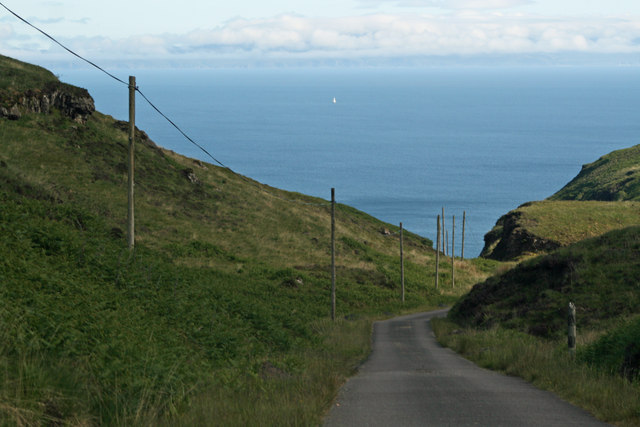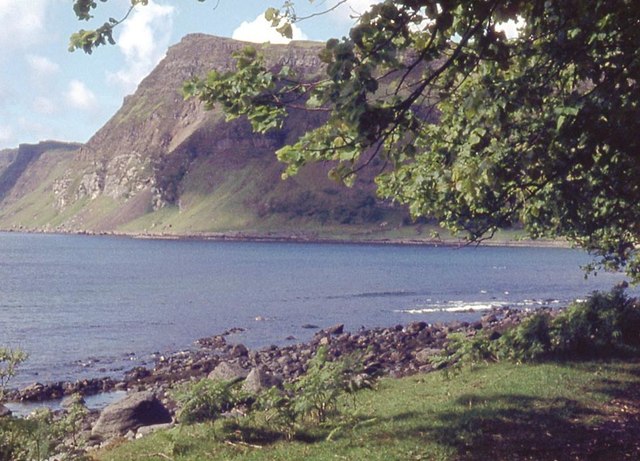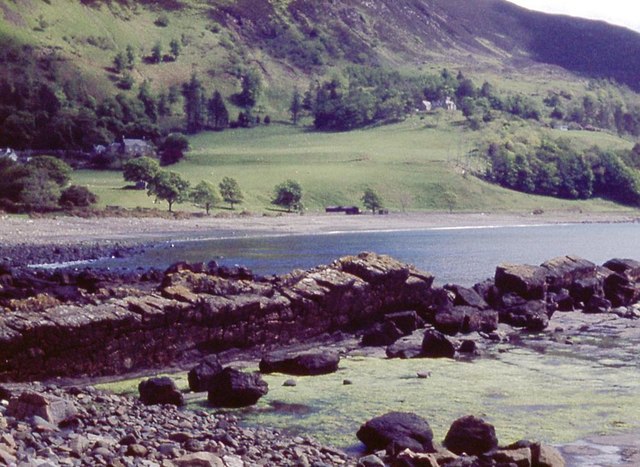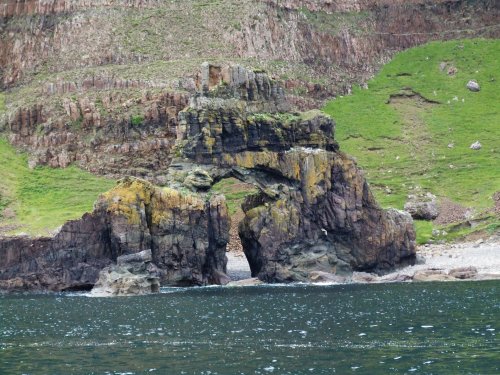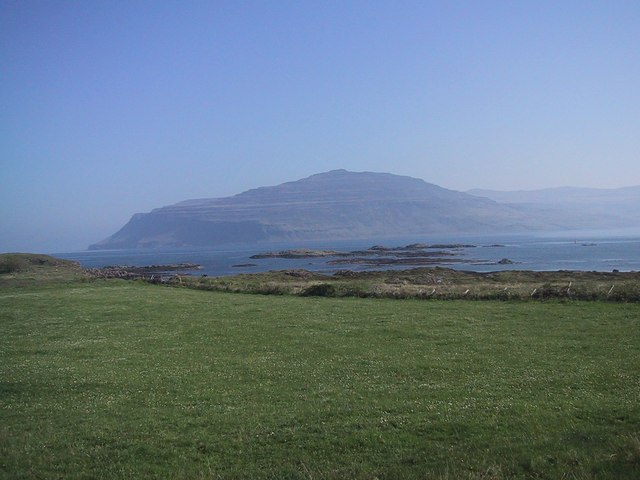Àird Ghlas
Coastal Feature, Headland, Point in Argyllshire
Scotland
Àird Ghlas
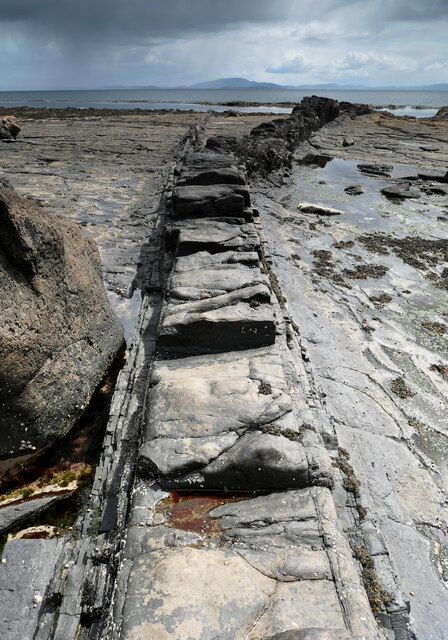
Àird Ghlas is a prominent coastal feature located in Argyllshire, Scotland. It is a headland that extends into the sea, forming a distinct point along the rugged coastline. The name "Àird Ghlas" translates to "green headland" in English, which aptly describes its picturesque surroundings.
Situated in an area of outstanding natural beauty, Àird Ghlas offers breathtaking views of the surrounding landscape and the vast expanse of the Atlantic Ocean. The headland is characterized by its steep cliffs, which provide nesting sites for various seabird species, including puffins, guillemots, and razorbills. These cliffs also serve as a natural barrier, protecting the coast from erosion caused by the relentless waves.
The headland itself is covered in lush green vegetation, giving it a vibrant appearance and adding to its beauty. The rugged terrain and rocky outcrops provide a habitat for a diverse range of flora and fauna, making Àird Ghlas a popular spot for nature enthusiasts and hikers.
Access to Àird Ghlas is relatively easy, with well-maintained paths and trails leading to the headland. Visitors can explore the area on foot, taking in the stunning views and enjoying the fresh sea breeze. The headland is also a popular spot for fishing, with anglers often casting their lines into the waters below in search of a catch.
Overall, Àird Ghlas is a captivating coastal feature that showcases the natural beauty of Argyllshire. Its striking cliffs, abundant wildlife, and panoramic views make it a must-visit destination for those seeking a connection with nature and the Scottish coastline.
If you have any feedback on the listing, please let us know in the comments section below.
Àird Ghlas Images
Images are sourced within 2km of 56.31887/-5.9895355 or Grid Reference NM5321. Thanks to Geograph Open Source API. All images are credited.

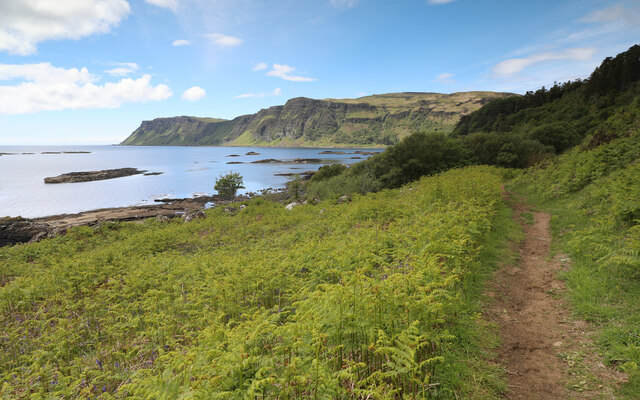
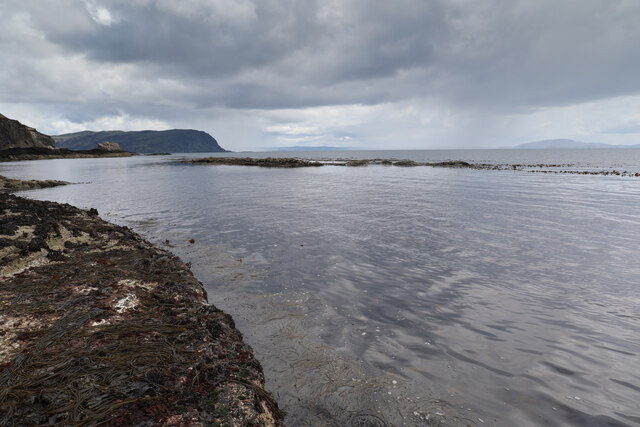
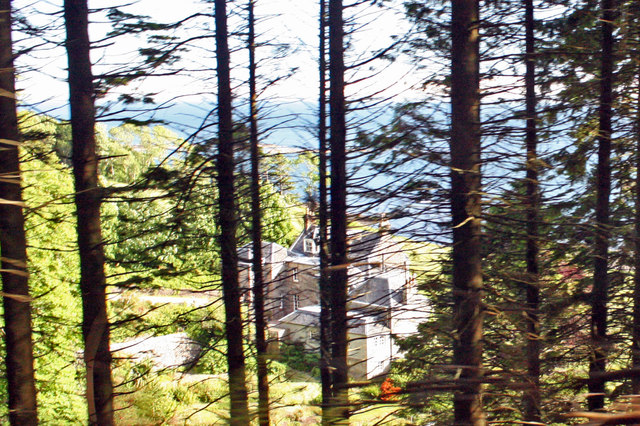





Àird Ghlas is located at Grid Ref: NM5321 (Lat: 56.31887, Lng: -5.9895355)
Unitary Authority: Argyll and Bute
Police Authority: Argyll and West Dunbartonshire
What 3 Words
///soups.suave.recently. Near Lochbuie, Argyll & Bute
Nearby Locations
Related Wikis
Carsaig Bay
Carsaig Bay is a cove on the Ross of Mull in the south of the Isle of Mull, off the west coast of Scotland. It is situated 5 kilometres (3 miles) eastward...
Carsaig Arches
Carsaig Arches are natural arch cliff formations on the Ross of Mull in the south of the Isle of Mull, on the west coast of Scotland. They are situated...
Pennyghael
Pennyghael (Scottish Gaelic: Peighinn nan Gàidheal) is a small village in the Ross of Mull, Argyll and Bute, Scotland. It is located along the A849 road...
Loch Buie
Loch Buie (Scottish Gaelic: Locha Buidhe, meaning "yellow loch") is a sea loch on the south coast of the Isle of Mull, off the west coast of Scotland....
Aird of Kinloch
Aird of Kinloch (Gaelic:An Àird) is a rocky outcrop between Loch Scridain and Loch Beg on the Isle of Mull, Argyll and Bute, Scotland. == References ==
Loch Scridain
Loch Scridain is a 15-kilometre-long (9-mile) sea loch, with a west-south west aspect, on the western, or Atlantic coastline of the Isle of Mull, in the...
Tiroran
Tiroran is hamlet on the Isle of Mull in Argyll and Bute, Scotland. == History == In the late 18th century Tiroran House was associated with the McKinnon...
Moy Castle
Moy Castle is a ruined castle near Lochbuie on the Isle of Mull, Scotland. The site is now a scheduled monument. == History == The land upon which Moy...
Have you been to Àird Ghlas?
Leave your review of Àird Ghlas below (or comments, questions and feedback).
